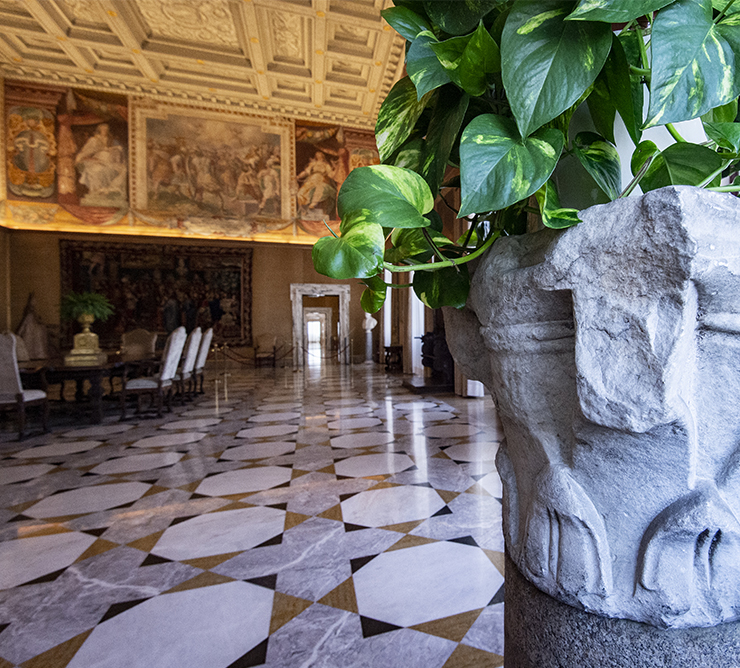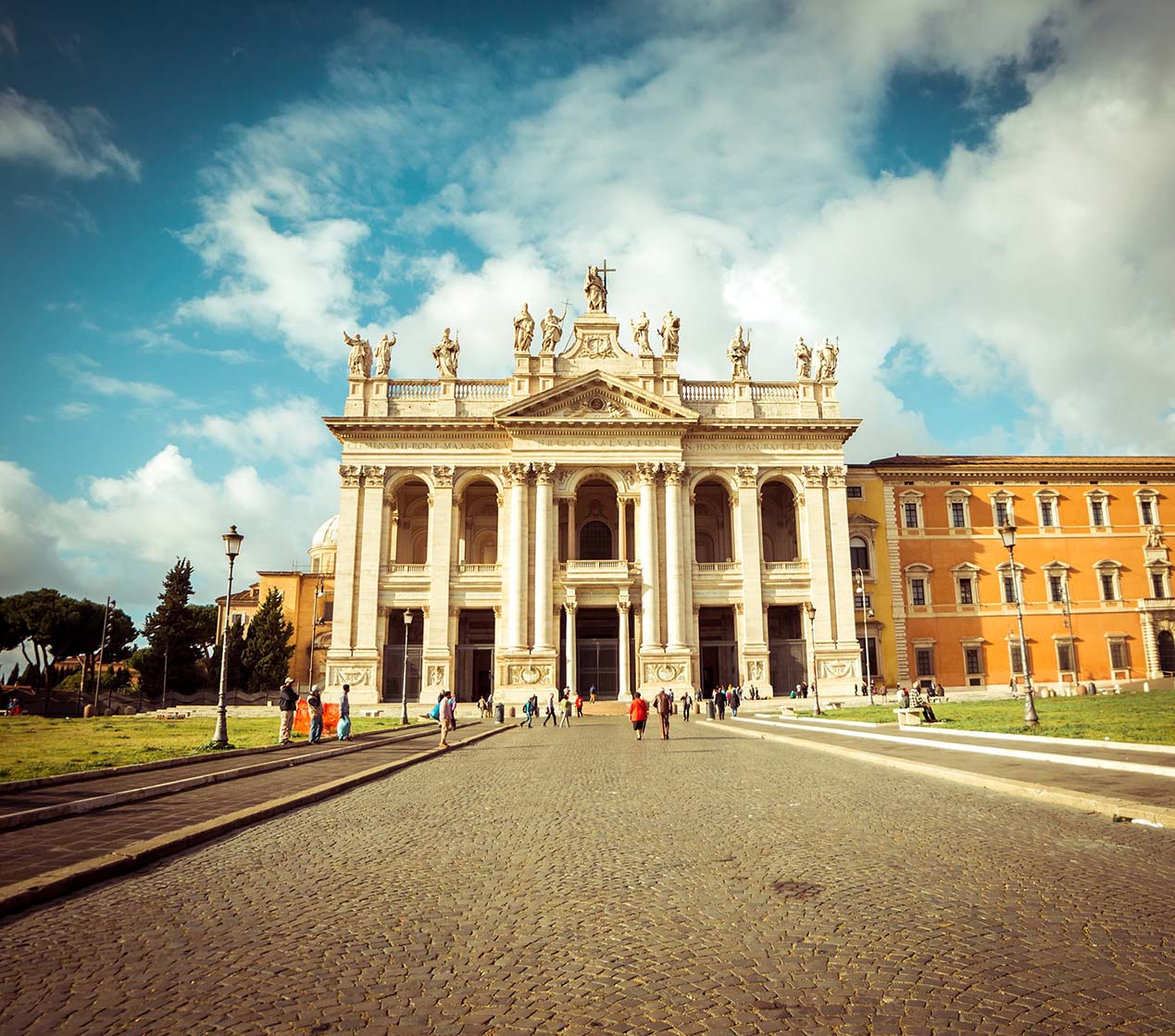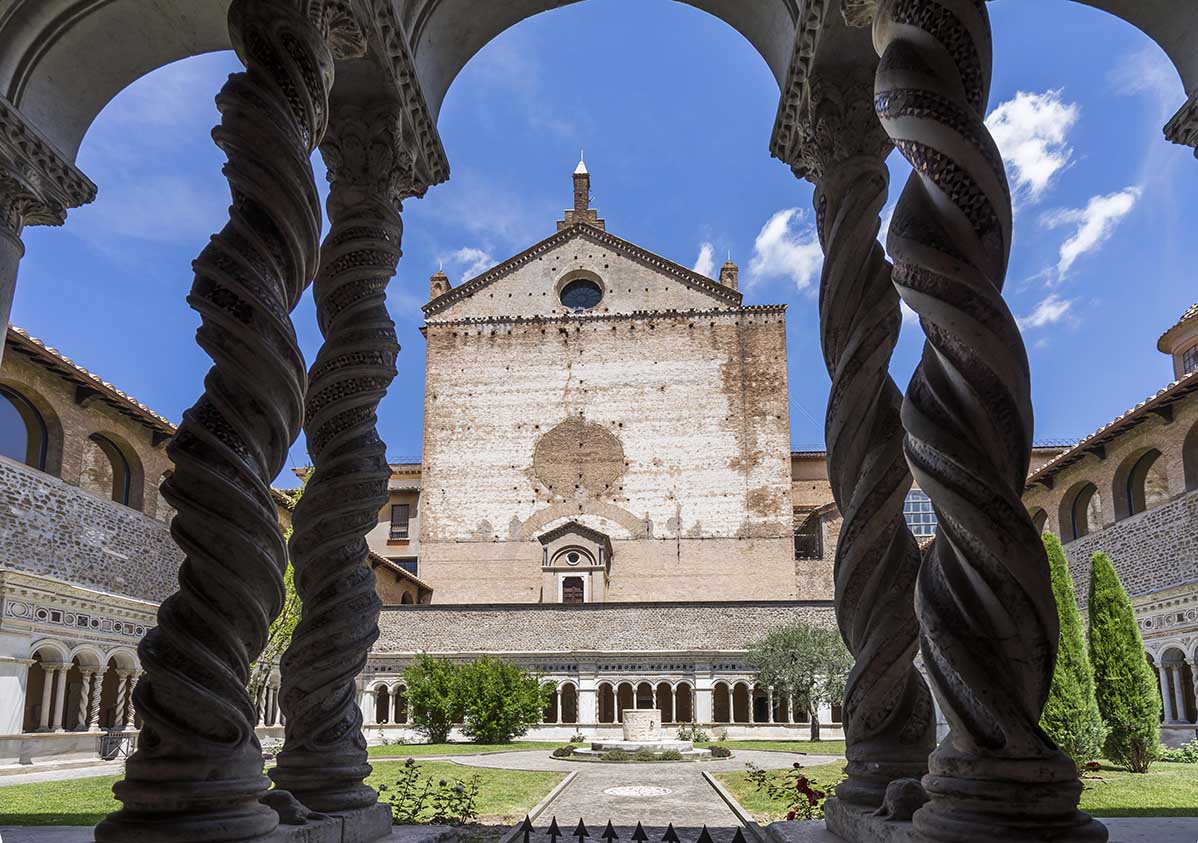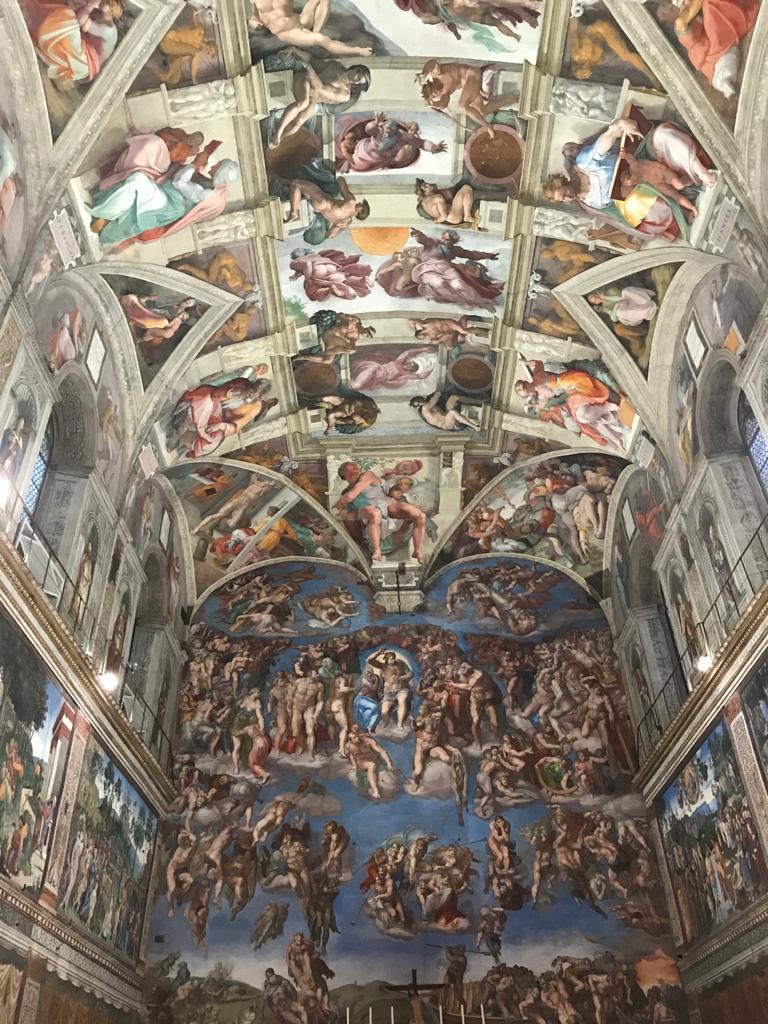Visita guidata giornaliera di Roma, dal Complesso Lateranense ai Musei Vaticani.
Una visita guidata che, lungo l’arco di un’intera giornata, ci accompagnerà alla scoperta di due luoghi simbolo di Roma e del Cristianesimo, ognuno con una storia ed un significato profondo: il complesso del Laterano e i Musei Vaticani. Testimonianze uniche del patrimonio religioso, storico e artistico della Città Eterna che toccano le tappe ideali del percorso della processione che, dopo la elezione del nuovo Papa, partiva dalla Basilica di S. Pietro per la sua presa di possesso della cattedra di Vescovo nella Basilica di San Giovanni, la Cattedrale di Roma.
Una visita di un giorno che lascerà nel vostro cuore un segno profondo.
Lingue disponibili: italiano ed inglese
Accompagnati da una guida ufficiale, la visita inizia dal Palazzo Apostolico Lateranense, voluto da Papa Sisto V Peretti alla fine del 1500 sull’area dell’antico Patriarchìo che per circa mille anni, a partire dal IV secolo, rappresentò la residenza principale dei Papi e della Corte papale. Attraverso il bellissimo Scalone del Palazzo Lateranense si accede all’attigua Basilica di San Giovanni in Laterano, una delle chiese più importanti del Cristianesimo: la prima chiesa cristiana dell’Occidente costruita dopo l’Editto di Costantino nel 313 d.C. e per questo considerata la "madre e capo di tutte le chiese di Roma e del mondo". La visita si conclude nel Chiostro, posto sul lato sinistro della basilica, esempio raffinato di arte medievale romana: già luogo di preghiera e meditazione per il clero della Basilica di San Giovanni in Laterano, oggi concede a chi lo visita un momento di grande pace e raccoglimento.
Alla fine della visita della basilica e del chiostro potremo raggiungere, comodamente seduti su uno degli open bus Vatican&Rome, i Musei Vaticani. Fondati nel 1506 da Papa Giulio II, i Musei Vaticani raccolgono una vasta collezione di opere d'arte accumulate dai Papi nel corso dei secoli che spaziano dall'antichità classica al Rinascimento, fino all'arte contemporanea. Le innumerevoli sezioni che compongono il museo come la Pinacoteca, il Museo Pio Clementino, la Galleria delle Carte Geografiche, le Stanze di Raffaello e molte altre custodiscono innumerevoli gemme di arte che ci preparano ad ammirare quello che è il cuore di questo complesso museale: la Cappella Sistina.
IL PUNTO DI INCONTRO PER LA VISITA GUIDATA E' PRESSO L'INGRESSO DEL PALAZZO LATERANENSE SITUATO ALLA DESTRA DELLA FACCIATA PRINCIPALE DELLA BASILICA DI SAN GIOVANNI IN LATERANO ALMENO 15 MINUTI PRIMA DELL'ORARIO PRENOTATO.
***
IMPORTANTE: La visita guidata non include l’ingresso alla Basilica di San Pietro. Tuttavia, la nostra guida esperta vi accompagnerà alla scoperta della sua affascinante storia dall’esterno, svelandovi curiosità e dettagli su questo straordinario simbolo della Cristianità. Al termine del pellegrinaggio, avrai comunque la possibilità di accedere liberamente alla Basilica direttamente da Piazza San Pietro, seguendo le indicazioni per l’ingresso. Un’opportunità unica per attraversare la Porta Santa in occasione dell’Anno Santo della Speranza.
Alcune informazioni per te:
Orari di apertura della Basilica di San Pietro
 Periodo estivo (1 aprile - 30 settembre): 7:00 - 19:10
Periodo estivo (1 aprile - 30 settembre): 7:00 - 19:10
 Periodo invernale (1 ottobre - 31 marzo): 7:00 - 19:10
Periodo invernale (1 ottobre - 31 marzo): 7:00 - 19:10
 Per maggiori informazioni sul Giubileo, visita il sito ufficiale:
Per maggiori informazioni sul Giubileo, visita il sito ufficiale:

The Lateran Apostolic Palace was built by Pope Sixtus V Peretti at the end of 1500 on the area of the ancient Patriarchate that, for a thousand years, from the fourth century, has been the main residence of the Pope and the Papal Court. A true sacred citadel, built next to the Basilica, dedicated to the Blessed Saviour and to Saints John the Baptist and Evangelist, today known as the Basilica of St. John Lateran. The Palace represents the ideal of Renaissance beauty that inspired the activity of a great Pontiff like Sixtus V, here and throughout Rome, during his papacy.
It houses several rooms of great historical and artistic importance, frescoed with abundance of details and rich in paintings and precious tapestries, such as the Hall of Glory, the Hall of Constantine, the Hall of the Popes and the Conciliation Hall, also known for the historic event of the signing of the Lateran Pacts between the Holy See and the Kingdom of Italy in 1929.
hide
Saint John Lateran Basilica was the first Christian church in the West built after the Edict of Constantine in 313 AD, and for this reason considered "mother and head of all churches in Rome and in the world". It is, in fact, the Cathedral of Rome and see of its Bishop, the Pontiff. A masterpiece of art and architecture, reimagined over the centuries by great architects such as Borromini and Galileo.
In the central nave we are welcomed by the wonderful large statues of the 12 apostles, witnesses to the apostolic succession of the Catholic Church. The beautiful Gothic canopy placed above the main altar protects two precious silver busts that guard the relics of Saint Peter and Saint Paul. In the apse we will admire the great mosaic of Christ surrounded by Saints and Angels, masterpiece of Roman art of the thirteenth century, restored at the end of 1800. The superb apse mosaic crowns the majestic Chair that confers to the newly elected Pontiff the authority of successor of Peter and Pastor of the universal Church.
hide
Located on the left side of the Basilica, and built in the 13th century by the Vassalletto family, it is a fine example of medieval Roman art, and one of the largest cloisters in Rome. A space delimited by columns with beautiful ornamental motifs that collects in its porches ancient marble finds related to the life of the Church through the centuries. This cloister, once place of prayer and meditation for the clergy of the Basilica, it offers moments of great peace and recollection to visitors and pilgrims.

Founded in 1506 by Pope Julius II, the Vatican Museums host a vast collection of works of art gathered by the Popes over the centuries ranging from classical antiquity to the Renaissance, up to contemporary art. The countless sections of the museum such as the Pinacoteca, the Museo Pio Clementino, the Gallery of Maps, the Raphael Rooms and many others are home to a vast collection of masterpieces of art that prepare us the authentic heart of this museum complex: the Sistine Chapel.
Mostly known for the works of Michelangelo, such as the Vault dedicated to the Stories of Genesis and the sublime Last Judgment over the back wall of the room, the Sistine Chapel is also the place where the Conclave to elect the new Pope takes place.
hide